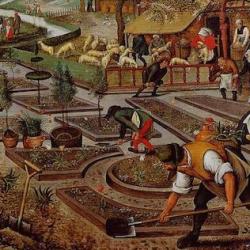In his Rise and Fall of American Growth, Robert J. Gordon argues that the growth rates for the American economy have leveled because the rate of innovation has leveled. And the rate of innovation has leveled, in part, because some innovations happen only once:
The flood of inventions that followed the Civil War utterly transformed life, transferring human attention and energy from the mundane to soaring skyscrapers and airplanes. What makes the period 1870–1970 so special is that these inventions cannot be repeated. When electricity made it possible to create light with the flick of a switch instead of the strike of a match, the process of creating light was changed forever. When the electric elevator allowed buildings to extend vertically instead of horizontally, the very nature of land use was changed, and urban density was created. . . . And so it was with motor vehicles replacing horses as the primary form of intra-urban transportation; no longer did society have to allocate a quarter of its agricultural land to support the feeding of the horses or maintain a sizable labor force for removing their waste. (4)
It all happened very fast. Between 1870 and 1920, women’s clothing went from being a homemade product to store-bought product. Over the course of about 60 years, electricity spread from 0 to nearly 100% of urban homes, and the same growth occurred with piped water and sewage disposal. Gordon writes, “the 1870 house was isolated from the rest of the world, but 1940 houses were ‘networked,’ most having the five connections of electricity, gas, telephone, water, and sewer” (5).
These innovations of the “second industrial revolution” are unrepeatable, and the innovations of the current “third revolution” are much more restricted in scope. I love my smart phone, but it’s not a life-enhancing invention on the same scale as running water and refrigeration. The digital revolution’s change “did not extend across the full span of human life as did IR #2, with the epochal changes it created in the dimensions of food, clothing, housing and its equipment, transportation, information, communication, entertainment, the curing of diseases and conquest of infant mortality, and the improvement of working conditions on the job and at home” (601).
As Gordon says, “some inventions are more important than others” (2).














